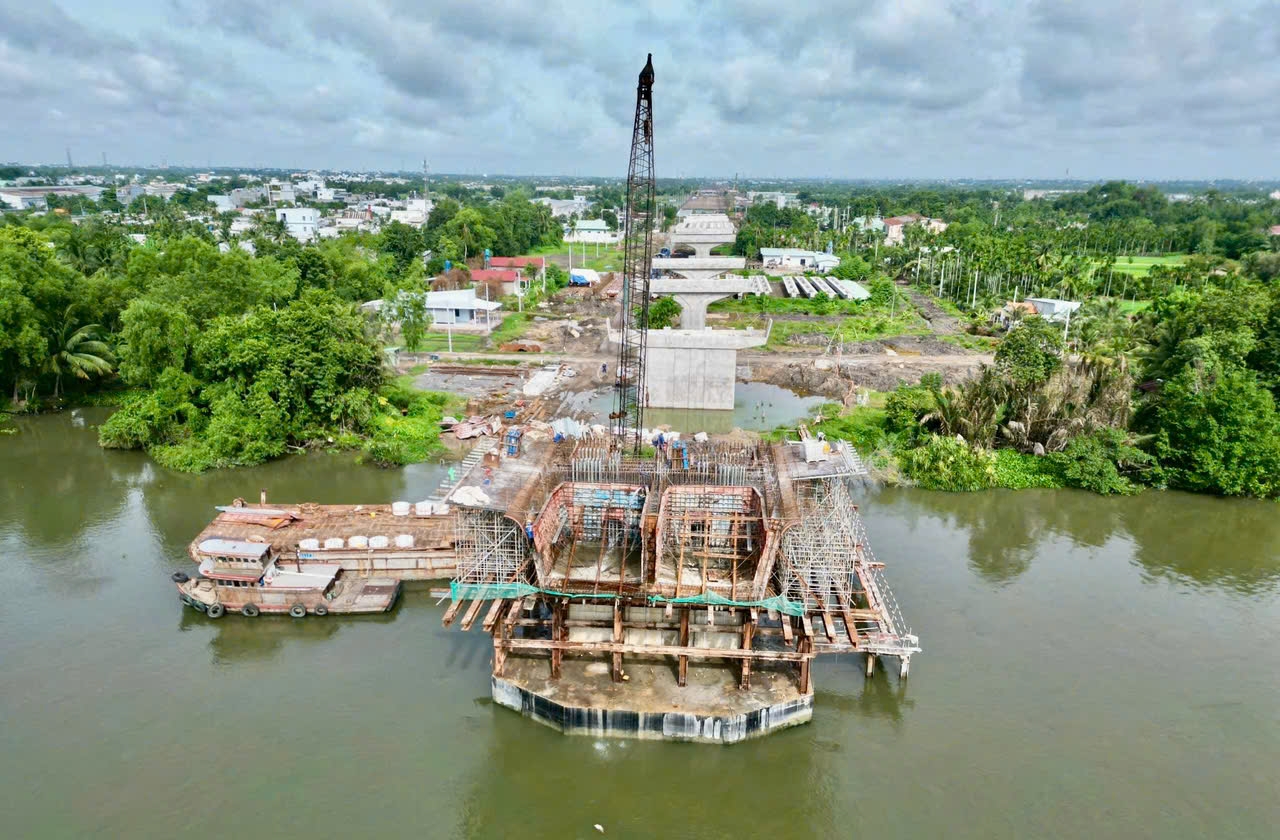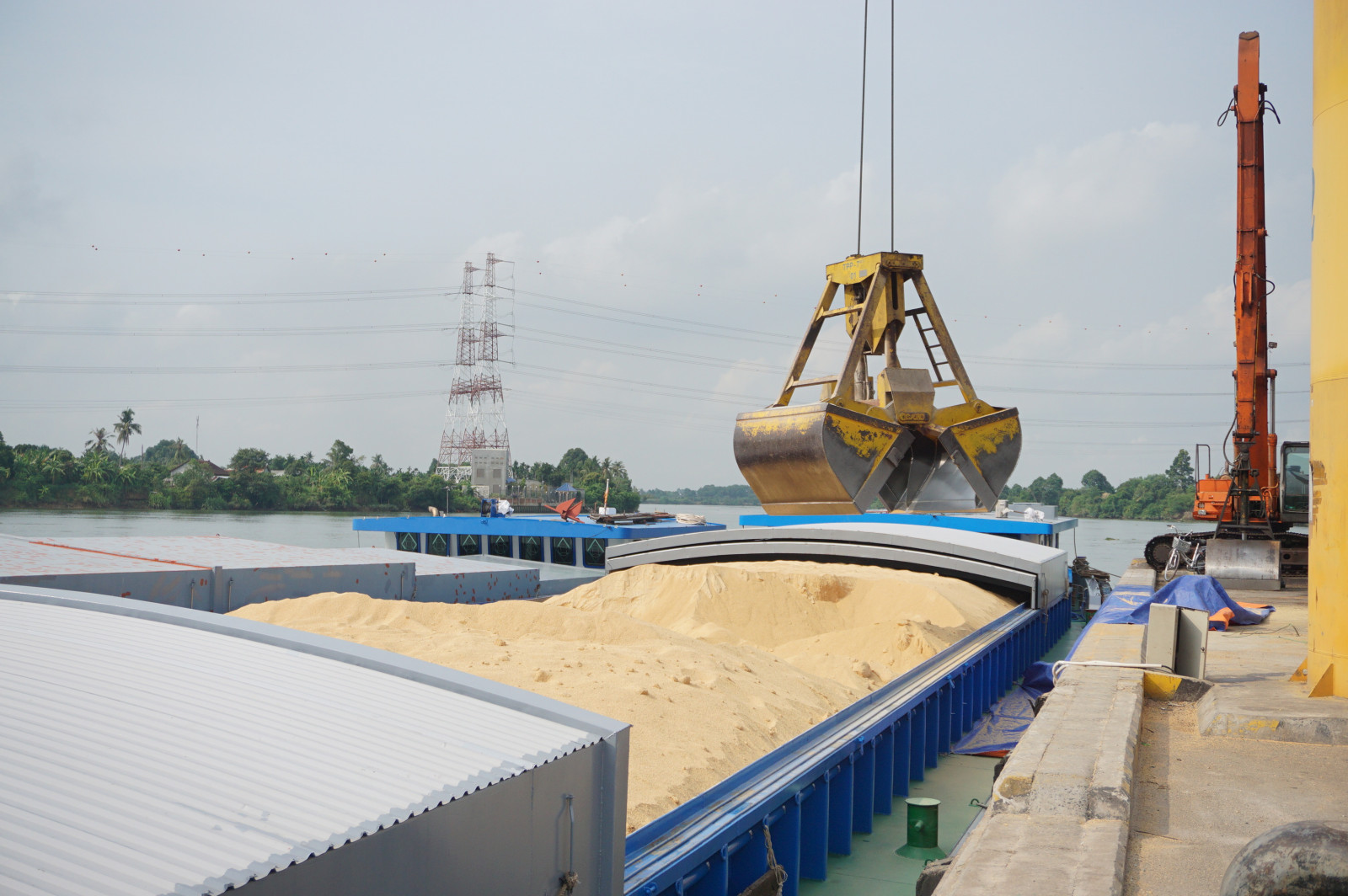Traffic to be developed for modern and synchronized regional connection under Binh Duong provincial planning for 2021-2030 with vision to 2050
According to the provincial Planning of Binh Duong for 2021-2030, with a vision towards 2050 approved by the Prime Minister, Binh Duong province will develop transportation infrastructure to ensure unity, rationality, coherence, modernity, environmental friendliness, and alignment with the development orientation of the country, the Southeast region, and the province.
Integrity and interconnection
Mr. Vo Anh Minh, Director of the Department of Transport, stated that according to the plan, Binh Duong province will develop national transportation routes in the province, including: West-East North-South Expressway, Ho Chi Minh City - Chon Thanh - Hoa Lu Expressway, Ho Chi Minh City Vanh Dai 3, Ho Chi Minh City Vanh Dai 4, National Highway 1, Ho Chi Minh Road, National Highway 56B, National Highway 13B, National Highway 13C. In addition, the province will develop an inter-provincial transportation system.
The transportation network connecting Binh Duong province with Ho Chi Minh city will connect National Highway 1A, National Highway 13, National Highway 1K, DT741, DT743B, DT745, DT746, Saigon River waterfront road, Vinh Phu 10 road, An Binh road among others.
Towards Dong Nai province, the province will develop a transportation network connecting the Vanh Dai 4 of Ho Chi Minh city, National Highway 1K, National Highway 56B, DT742C, DT743, DT746E, DT746G, DT747, Nguyen Thi Minh Khai Street, the bridge connecting Pham Van Dieu Street to Bien Hoa Airport, the road from the intersection of Tan Ba market (DT747A, Tan Uyen City) connecting to Road D21 among others.
Towards Binh Phuoc province, the following routes will be used to connect between the two localities: West North-South Highway, Ho Chi Minh City - Chon Thanh - Hoa Lu Expressway, National Highway 13, National Highway 13B, National Highway 13C, Ho Chi Minh Road, DT741C, DT744B, DT748, DT748B, DT748C, DT749B, DT750E, DT750F, etc.
Towards Tay Ninh province, developing transportation infrastructure along the West-East North-South expressway, Ho Chi Minh road, National Highway 56B, DT749B, DT749E, DT749F, DT750 etc.

Binh Goi Bridge, after completion and put into use, helps reduce the load for Phu Cuong Bridge connecting Thu Dau Mot city with Cu Chi district, Ho Chi Minh city.
According to the plan for provincial transportation infrastructure development, by 2030 the entire province will have 43 provincial roads, including 16 existing routes and 27 new additional routes.
Specifically, the existing 16 provincial routes will be invested in upgrading, adjusting the direction of some sections, and extending the segments of routes that have not been formed to ensure technical specifications and form a smooth transportation network. Some of the additional 27 new provincial routes will be adjusted, upgraded, and invested in new sections.
Railway to connect ports and harbors
|
The provincial People's Committee is considering the investment policy for the construction of ITC - Rach Bap dry port in An Tây ward, Ben Cat city. The project is expected to cover an area of nearly 12 hectares, with an estimated capacity of 2-3 million tons per year and a total investment capital of over 1,375 billion VND. The construction of the project is planned to start in the third quarter of 2025, and the investment, operation, and business activities are expected to be completed in the third quarter of 2027. The ITC - Rach Bap dry port will be capable of accommodating vessels with a tonnage of up to 3,000 tons. |
Based on the Railway Network Planning for 2021-2030, with a vision until 2050 approved by the Prime Minister, Binh Duong province will study the construction of additional railway lines connecting Bau Bang - Moc Bai railway with Ho Chi Minh city - Loc Ninh railway, and the railway connecting the Central Highlands provinces with Ho Chi Minh City - Tay Ninh railway.
Binh Duong province is studying the investment in constructing 12 metro lines as urban railways connecting with Ho Chi Minh city, Bien Hoa city (Dong Nai) and localities within the province.
Regarding the inland waterway network, according to the Inland Waterway Infrastructure Planning for 2021-2030, with a vision to 2050 approved by the Prime Minister, Binh Duong province will develop the national inland waterway infrastructure, transportation corridors, and waterway transport routes in the province; develop local inland waterway transport routes on the Saigon, Dong Nai, and Thi Tinh rivers.
The inland waterway port system in Binh Duong province is particularly developed according to the overall plan for the development of the Vietnam seaport system during 2021-2030, with a vision towards 2050, which has been approved by the Prime Minister.
Construction materials are being loaded at Thanh Phuoc Port, Tan Uyen city
In order to serve the needs of import and export, Binh Duong province focuses on developing inland container depots (ICD). Accordingly, in addition to existing dry ports such as An Son dry port, Binh Hoa dry port (Tan Cang Song Than), TBS Tan Van Di An dry port, Thanh Phuoc dry port, Tan Uyen dry port, Ben Cat dry port cluster, Thanh An dry port, Binh Duong province is studying the construction of Bau Bang and Lai Hung dry ports (Bau Bang district), Vinh Tan dry port (Tan Uyen city), Bac Tan Uyen dry port (Bac Tan Uyen district), An Binh terminal dry port (Di An city). Riverside dry port in Ben Cat city and dry ports at planned transportation hubs and industrial clusters will be constructed in the near future.
In addition to the river port system and dry port, Binh Duong province also allocates land reserves for research and investment in the construction of an airport in Dau Tieng district, which is suitable for local conditions and actual needs.
Reported by Minh Duy – Translated by Vi Bao


